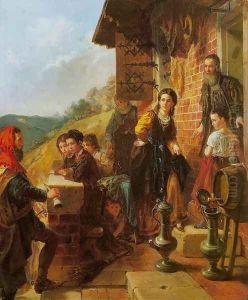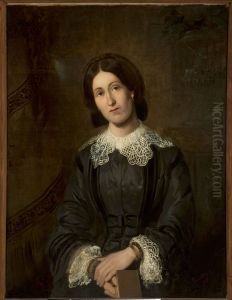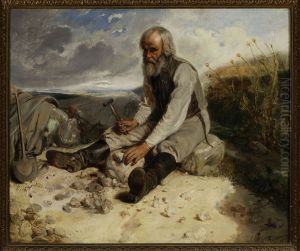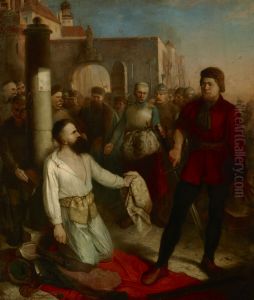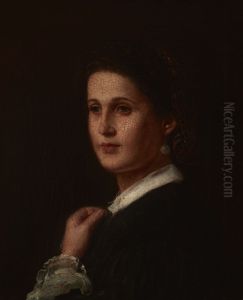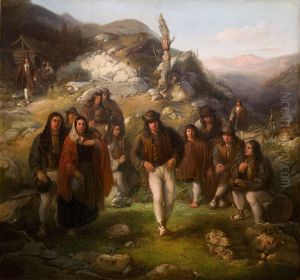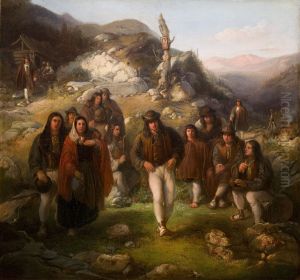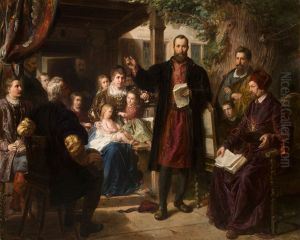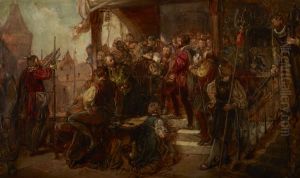Wladyslaw Luszczkiewicz Paintings
Władysław Łuszczkiewicz was a Polish artist, art historian, and educator, known primarily for his contributions to the Polish art scene during the 19th century. Born on August 30, 1828, in Kraków, which at the time was under Austrian rule, Łuszczkiewicz grew up in a Poland that had been partitioned among the Russian Empire, the Kingdom of Prussia, and the Austrian Empire. Despite the political challenges of the era, Polish cultural life flourished, and Łuszczkiewicz became one of its significant figures.
Łuszczkiewicz studied painting at the School of Fine Arts in Kraków, where he later became a professor and rector. His academic career was marked by a deep commitment to the preservation of Polish cultural heritage and the education of future generations of artists. As an artist, he worked in various media, including painting and drawing, and his style was influenced by Romanticism, which was prevalent throughout Europe at the time.
Aside from his artistic practice, Łuszczkiewicz was deeply involved in the documentation and conservation of historical Polish art and architecture. He was a co-founder of the Museum of National Art in Kraków, which is now known as the National Museum, Kraków. His work in art history and conservation played a crucial role in the revival of interest in Gothic and Renaissance art in Poland, and he was instrumental in the restoration of numerous historic buildings and artworks.
Łuszczkiewicz's legacy extends beyond his paintings and conservation work. His influence as an educator was profound, with many of his students going on to become prominent artists and contributors to the Polish art world. He was also an active member of the Kraków Scientific Society and contributed to the cultural life of the city through his involvement in various artistic and scholarly organizations.
Władysław Łuszczkiewicz passed away on April 27, 1900, in Kraków. Today, he is remembered for his dedication to Polish culture and art and his efforts to preserve Poland's artistic heritage during a period of great political upheaval. His works are part of the collections of various museums in Poland, and his name is honored in the context of Polish art history as a symbol of the 19th-century intellectual and cultural resurgence.
